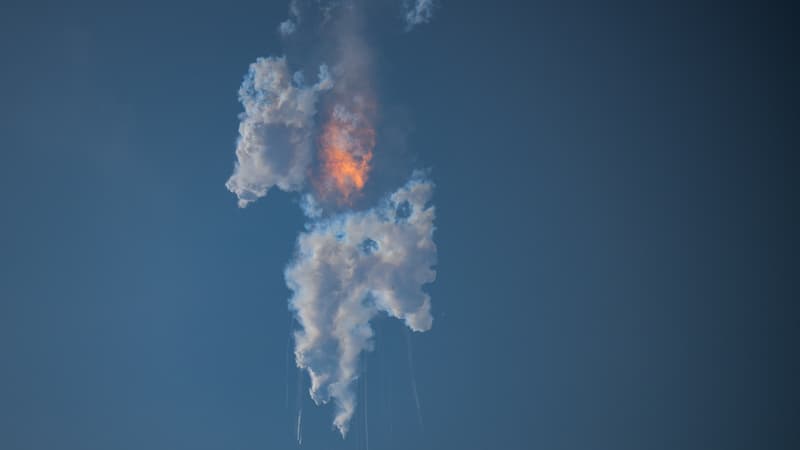“We have learned a lot for the next takeoff test in a few months.” This is a congratulatory message from Elon Musk to the SpaceX teams after the first test flight of Starship, the world’s largest rocket, which lifted off on Thursday before exploding a few minutes later.
NASA chief Bill Nelson also praised SpaceX. “Every great achievement in history has required some level of calculated risk,” he tweeted, saying he was “looking forward” to the next test.
Jean-François Clervoy, astronaut and founder of Air Zéro G and guest of BFMTV, confirms that the result of the launch of this promising rocket in more ways than one does not affect in any way the feat achieved this Thursday by the American company.
“Lift off went well despite some engines not starting,” the astronaut said, adding that “SpaceX will learn a lot from this information.”
The separation of the floors failed, but the takeoff was achieved
This Thursday, the flight plan was as follows: about three minutes after takeoff, the Super Heavy had to take off and fall back into the waters of the Gulf of Mexico. A separation that did not occur, subsequently causing the explosion of the rocket.
If the separation had been successful, the Starship spacecraft would have to fire up all six of its engines and continue its climb on its own, up to more than 150 km in altitude, and then fall back into the Pacific Ocean after just under one spin. from the earth. . The fact remains that if the separation could not be carried out correctly, the launch itself could be carried out without too much difficulty.
Starship, which has never flown in its full configuration before, is larger than NASA’s new megarocket, SLS, and the legendary Saturn V, the rocket from the Apollo lunar program. The Starship’s takeoff thrust is also about twice as powerful as these other two launchers.
In a gigantic ball of fire, the 120-meter-tall rocket broke free of the ground around 8:30 a.m. US time, to cheers from SpaceX employees. The setting for this long-awaited spectacle was the Starbase space base, located in the southern tip of Texas, United States.
But a few minutes after taking off, the rocket finally exploded over the sea, for a reason yet to be determined. The purpose of this test was to collect as much data as possible to improve the following prototypes. “We made it off the launch pad, which was honestly everything we hoped for,” SpaceX engineer Kate Tice said during the company’s live video.
Even before Thursday’s launch, Elon Musk had also wanted to temper expectations, declaring it unlikely to reach orbit on the first try. “I would like to lower my expectations”, the American businessman had confided last Sunday.
“If we get far enough from the launch pad […] I think I would consider it a success. Just don’t destroy the launch pad,” Elon Musk said at the time.
Source: BFM TV


